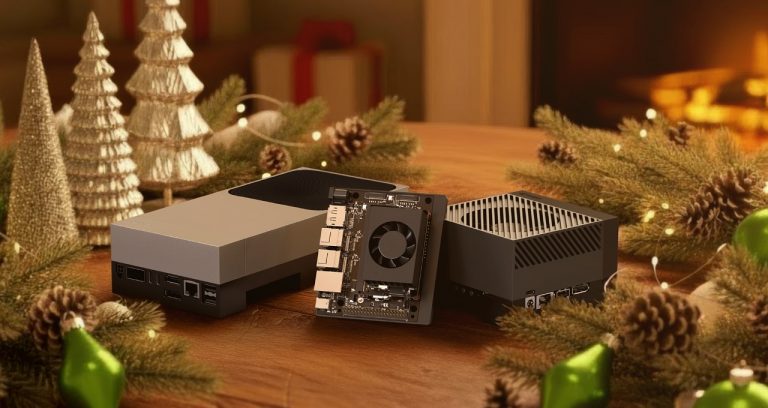When you professionally deploy a fleet of Jetsons out into the wilds, managing them is quite the task. Fortunately, there are some great tools out there to help. One set of solutions is offered by Allxon, a Preferred NVIDIA Partner. Looky here:
Background
Most developers are familiar with the usual ways of doing remote management of computers. It is more complicated with embedded devices like the Jetsons due to additional constraints.
What happens when you have a large number of Jetsons deployed, and don’t have physical access to the machines? There are groups of technical people called System Administrators and Network Administrators that typically handle that task. Working in this ecosystem is a different world than what most developers see when they are developing their applications. Security is a big deal, doubly so when you’re working with embedded devices on the edge. This leads us to the two main methods of remote management: In Band Management and Out of Band Management.
Working with products like AWS or Google Cloud, typically there is a dashboard which allows monitoring and managing of a very large number of computers and their services. You can think about this in two main methods. There is “In Band” management, and there is “Out Of Band” (OOB) management.
In Band Management
In Band Management is what most people consider remote management, involving connecting to a network device via SSH or similar tools. Here’s a quick run down:
Dependent on the Operating System: In-band management relies on the primary operating system and network interface of the device. Management tasks are performed over the same network used for regular data communication.
Shared Network Channel: It uses the same network infrastructure as the normal “business” data traffic. Management data travel alongside regular network traffic.
Limited Access During Failures: If the operating system or primary network interface fails, in-band management capabilities are usually lost, making it difficult to perform recovery operations remotely.
Out Of Band Management
Out Of Band Management typically adds hardware to communicate to the device being monitored. Formally this is referred to as a Baseboard Management Controller (BMC). The BMC can physically control the device, controlling power, reset, low level serial console access and so on. Most servers have that hardware (which is typically centered around a microcontroller) built-in. The quick rundown:
Independent of the Operating System: Operates independently, allowing access even if the OS is down.
Dedicated Management Channel: Uses a separate channel for management tasks, enhancing security and reliability.
Access During Failures: Provides management capabilities during system or network failures, crucial for troubleshooting and recovery.
Allxon Remote Monitoring and Management for Jetson
Fortunately, Allxon Portal offers complete remote monitoring and management solutions for managing Jetson device fleets. Allxon Portal offers complete remote monitoring and management (RMM) solutions for Jetson devices. In addition, Allxon offers an Out Of Band hardware solution.
Here’s a snapshot of an overview page when you have a couple of hundred devices:
The Allxon Portal allows you to monitor the devices as well as manage them. To enhance this functionality further, Allxon offers the Bolt OOB Enabler. There are a large number of features which allow grouping of sets of devices, provisioning, and a large group of other tools.
Allxon Bolt OOB Enabler
In the video, we look at the Bolt OOB Enabler on a Jetson Orin Nano Developer Kit. This board connects via 9 wires to the Automation and GPIO Headers. The Automation Header connections allow the power to be controlled to the Jetson. Also, the Bolt accesses the Serial Debug Console on the Automation Header. This enables direct device-level troubleshooting and remote access.
The GPIO Header connections attach to a UART and one of the GPIO pins to monitor the system power state. Another important aspect of remote management is Over The Air (OTA) updates.
Over The Air (OTA) Updates
Over the Air Updates are a crucial aspect of remote management. The Allxon Portal solution makes deployment easy. With the Bolt OOB Enabler, it’s a lot less stressful because you have access to the Jetson at the lowest level. Because you have access to the Serial Debug Console, you can look directly at the UEFI and get access to the low level device managers.
It is straightforward to create a payload to deliver as the OTA. The payload can be as simple as updating a few files, a docker image, or as complicated as doing a JetPack upgrade. However, while deploying the payload is easy, creating a working payload should be tested thoroughly before deployment. It’s one thing to bonk your development system testing; it’s another deploying to a fleet.
In the video, we deliberately have the typical deployment errors many developers make when writing code. The JetsonHacks Github repository is here. The development machine typically has all the libraries and permissions set correctly for the app that they are developing. Deployed devices? Not so much.
You should always have a local test device (or a few) to ensure your changes are going to work when they go out into the brave new world.
Conclusion
If you have a fleet of Jetsons, or have mission critical ones to which you need remote access, take a look at the Allxon solution.
The post Remote Management of Jetsons using Allxon appeared first on JetsonHacks.











